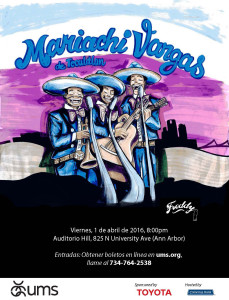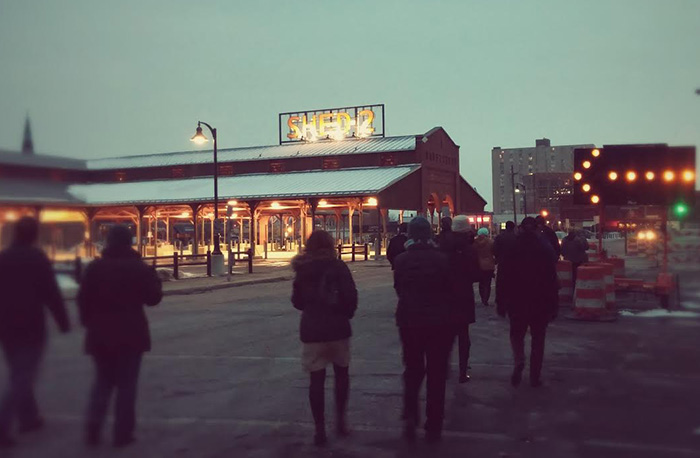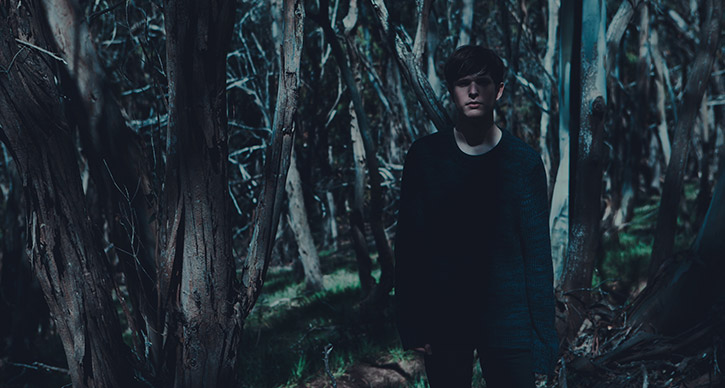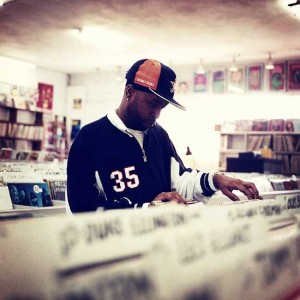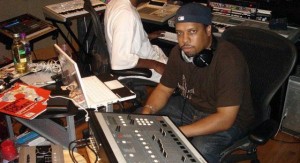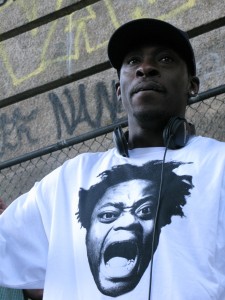March 27, 2018: Your Arts & Culture Adventure Picks
This post is a part of a series of posts curating adventurous arts and culture experiences in Southeast Michigan. Sign up for email updates (choose “Arts & Culture Adventures” list).

UMS Wallace Blogging Fellow Amanda Krugliak is an artist, curator, and arts administrator best known for performance and conceptual experiential installations, most notably as curator at the University of Michigan Institute for the Humanities since 2007.
I’m still patiently waiting for crocuses to be in full bloom, and I’ve been reminded yet again this year that things never quite turn out the way you expected. I’m never going to be an heiress, its official. Alert the media… and I’m not sure I still believe in the American Dream.
But I’ve reminded too, of the power of the People, their great ideas, and how many of them are right here right now. There are so many extraordinary happenings in your town…things to see, places to go, a melody that opens you up. After a long winter and a road full of pot- holes, Place is what you make it. So, turn off the space heater and the nature channel, tumbleweeds are so “yesterday.” Swap those slippers for Chelsea boots, and venture out! Because Why Not….

56th Annual Ann Arbor Film Festival
March 20-25
Ann Arbor
The Ann Arbor Film Festival is truly one of the greatest happenings every year, anywhere. 56 years old, it’s still quirky, smart, engaging, offbeat, inspiring, and inventive. It continues to bring together visual thinkers from across the globe, along with our own eclectic like- minded visionaries, all gloriously gathering in style to celebrate experimental film.
Under the leadership of Director Leslie Raymond and Associate Director of Programs Katie Mc Gowan, the offerings this year surpass expectations in their relevance, and innovation. In addition to the sublime experience of viewing so many wonderful films in competition, and attending all of the celebrations and goings on during the week, the festival offers special new programs this year well worth citing: Memories of Disintegrations: Ibero-American Experimental Film, explores Spanish and Portuguese-language films on Video8, Super *, 16mm, Super 35mm, and VHS. Black Radical Imagination showcases films that explore racial identities beyond the restrictive boundaries and limitations often prescribed to people of color. These challenging programs extend our understanding and reach, and are representative of the bold spirit of this long running avant-garde festival. Also note a special screening of The Big House, a documentary about our own grand stadium and the labor behind the scenes that goes into the sports spectacle…from cooks to snipers. Also this year, don’t miss multi-media works Off the screen in venues across town—among them Lily Baldwin and Peter Rose// Room 2435 North Quad UM, Razan AlSalah and Radical Democracy//Ann Arbor Art Center; and Matt Wilken// Arbor Brewing Company.
TALK: Simone Brown + Danielle Dean in Conversation
March 29, 7 pm
MOCAD, Detroit
Sociologist Simone Browne’s acclaimed book Dark Matters: On Surveillance of Blackness examines surveillance in relation to the history of transatlantic slavery and its afterlives. These themes informed in part by Browne’s research are central to Danielle Dean’s multimedia installation TrueRedRuin on view at MOCAD. This conversation between them explores the different ways that scholarship and artistic practice can overlap, dovetail, igniting critical dialogs and raising social consciousness in the process.
Exercising the Eye: The Gertrude Kasle Collection
 March 10-July 22,
March 10-July 22,
Alfred Taubman Gallery, UMMA, Ann Arbor
This lyrical exhibition celebrates Gertrude Kasle (1917-2016), who was a key figure in the formation of Detroit’s contemporary art community in the 1960’s and 70’s. Like other strong minded maverick women of her generation in the arts, she wanted to provide her Midwestern community with a venue in which to experience cutting edge art from centers like NYC. Yet, she also wanted to support and exhibit regional artists, so that the work of both groups could be included in that visual and critical conversation. This surprising and disarming show, which includes the work of Phillip Guston, Jane Hammond, Robert Rauchenberg, Jasper Johns, among others, captures the particular tenor of that era…the imagination, the drive of the gallerist, and the exciting way artists were connected in their inquiries. Don’t miss the incredible paintings by Grace Hartigan, with superb color and gesture that are as fresh today as in 1974. And make sure to take home a vintage poster from the original shows produced by the Kasle Gallery, which you can purchase in the gift store for a song. Now that’s a great day.
Romare Bearden
N’NAMDI center for contemporary art, Detroit
This exhibition offers an opportunity to see the works of acclaimed artist Romare Bearden, whose collages and paintings are iconic. He has influenced so many young artists who came after in regards to story, directness, use of color, and deliberateness of stroke and design. Bearden was a multidisciplinary artist ahead of the curve, interested in the intersection, influence and overlay of music, visual art, history, performance, literature, and culture. Above all, he was a humanist, genuine in his passion for the world and those in it, past, present and future tied together like a daisy chain.
Like what you read? Sign up for email updates (choose “Arts & Culture Adventures” list).
Unique Venue: Downtown Boxing Gym
November 17-20, 2016, UMS presents choreographer Nora Chipaumire’s portrait of myself as my father in Detroit at the Downtown Boxing Gym. Find out more about the amazing youth program at Downtown Boxing Gym.
Learn more about the performances of Nora Chipaumire’s portrait of myself as my father November 17-20, 2016.
Community Spotlight: Muralist Freddy Diaz
Southwest Detroit mural artist Freddy Diaz designed a special poster for the Mariachi Vargas de Tecalitlán performance. We chatted with Diaz about starting out with graffiti, living in Southwest Detroit, and Mariachi music.
UMS: How long you’ve been working on murals?
Freddy Diaz: I want to say maybe a good four years now. My introduction into doing murals was graffiti. I grew up in Southwest all my life and came out of the Detroit Public Schools program. People were still very ‘90s when I was growing up, and even then technology wasn’t super up yet, and everybody rode bikes, and there was a bit of gang stuff, but it was either graffiti or gangs. And I always chose graffiti. I liked the art and colors, and it drew me in a lot closer than doing anything negative.
So, I started doing graffiti when I was 12-13 years old, and then as I got older and gained a bit more consciousness about what to do with my art, I started to reach out to local businesses in the neighborhood. That gave me an opportunity to work with business owners, and they gave me advice about how to adjust, how to run my own business. So I would say that I got legit about three-four years ago, and I’ve been at it ever since.
UMS: Were you part of an arts program at DPS, or was this more of a hobby?
FD: It was a hobby from a culture that started before I was born. Detroit has a graffiti culture that probably started in the late ’80 or early ‘90s, and then just followed through generations.
I think that’s what I like about Southwest is that Southwest is really active as far as culture. The majority of Southwest is Mexican, but there are areas where there’s a lot of Arabic culture, areas where there’s Cuban, Puerto-Rican. It’s really cool because you get a bit of everything.
UMS: We’re talking in part because you did this special poster promoting the Mariachi Vargas performance. Has Mariachi music has played a role in your own life?
FD: I would honestly say that I did overlook it when I was younger because it’s just always been around us. When you do go to Mexico, everywhere there is a plaza where on a Sunday night there are Mariachi playing. You take your girlfriend on a walk, stroll through the park at night, and there are just bands. There are people selling food, or people just singing. So I’ve always had it around since I was a kid.
When I was working on the poster, I was thinking more about the vibe that people get from Mariachi music, and I kind of wanted to give people that same feeling.
I did tell my parents about this poster, and they ended up telling me that Vargas are the top Mariachis in the world.
I was like, “Yes, mom, I’ve been doing this Mariachi poster for UMS,” and they’re like, “Really? What’s the name of them?” And I was like, “You know Vargas-something,” and she just finished the name—[laughs] and I was like, “Yes!” and she was like, “No way, show me.” So I pulled out the email, and she reads it and says, “You know they’re like the best in the world, right?”
That got me freaking out, I was like, “Really?” I kind of felt embarrassed because I didn’t know, and I think that it was better that way because if I knew, it would’ve been overwhelming. Not knowing the whole time let me have more fun with it.
See the Mariachi Vargas de Tecalitlán in Ann Arbor on April 1, 2016.
Kyle Abraham’s Childhood Road Trips
Listen to a funny outtake of Kyle talking about childhood road trips to Detroit & Jerry Curls. Check out his upcoming performances on March 13th and 14th: http://bit.ly/1iinyG7
Exploring Eastern Market before Dawn of Midi
We had a great turnout to the pre-show Eastern Market Experience. Check out more opportunities to dive in with UMS here.
Dawn of Midi performs 1/31 in Detroit
Get tickets to Dawn of Midi in Detroit on Saturday, January 31, 2015, 9:00 pm at Trinosophes! Click here to learn more.
Interview with James Blake
Currently touring the US and Canada, James Blake offers audiences a taste of the evolution of his sound with his sophomore release Overgrown (out now on Universal/Republic). Blake performs at the Michigan Theater in Ann Arbor on November 11, 2013 as part of the 2013-2014 UMS season.
He took a few minutes to chat with us about the music, the rich musical history of the Detroit area, and balancing DJ and band life.
Drew Waller: Detroit. Since you’re stopping in the area on your tour, how much do you think about the musical history of this town?
James Blake: Hmm, yeah! In terms of techno, I’m only recently a kind of “convert” in some ways. Really, some of the best, still the best music originals comes from Detroit and Chicago. We’ve really been looking forward to coming to Detroit, for that reason really. We are all into that that kind of music, and if there are any nights like that while we’re here, we’ll be there.
DW: You better believe we have a lot to offer you. You know, there is a yearly festival in downtown Detroit that’s called Movement, and I don’t know if you’re familiar with it, but a lot of the DJ “heads of state” that have a long-standing history in the area are often there alongside with newer folks like yourself, AZARI & III, Tensnake, who are building themselves in the scene and having a respect for this place, at a time when it gets put down in so many other ways.
JB: YES, I agree. I agree!
DW: For you, you have certain experiences on the road when you are overseas. You debuted top ten overseas, and people have embraced [your new album] Overgrown. Tell us about your experiences as you’ve been on the road in the US. Are there similarities or differences with how you’re received in the UK?
JB: Yeah, I mean there’s a kind of exoticism, you know, both ways. There is a kind of magic to being in a new place. Where, you know, there’s unfamiliarity, but there’s also a kind of familiarity from growing up with American references and American music. I love it here.
The audiences are seeing something that they might not see every day, too. It’s not just a band from their hometown, you know? We can FEEL the excitement. The crowds so far [on this tour] have just been utterly amazing.
DW: London, of course, is your hometown, but if you lived in the US, what city so far [in your travels] do you think you might call home?
JB: That’s a hard one. I’m a suburban kind of gent. I came from the suburbs of London, and there’s part of me that would love to live somewhere completely remote. Like on an island off of Seattle. Or maybe New York? Honestly, there are so many places I’d just have to maybe wait, until I’m — which is never going to happen — I’m incredibly rich, and can then travel and see.
DW: It will be really interesting to see what you do take away as you go from place to place. You’ve also been across the border to Montreal and Toronto during your touring travels, which actually brings us to your EPs. You did a gorgeous rendition of Case of You [by Joni Mitchell, from Blake’s Enough Thunder EP]. I put that track on heavy rotation on any given Sunday.
JB: Awwww!
DW: I do find it interesting that you do have skills and tenacity as a DJ while also being a composer, and all of your EPs have amazing B-sides [“At Birth” from Love What Happened Here EP, for example], but you don’t see many “James Blake” remixes out there. Looking on Beatport, iTunes and nothing.
JB: You’re right. I haven’t done any remixes, and no one’s made remixes [of my work].
DW: Yeah! You have so much music out there, and I find it surprising that remixes haven’t been commissioned [officially] by you or your label. I do see some that are, you know, bootleg, but nothing official. What’s your take on that?
JB: DJs, they do a kind of, bootlegs, yeah. I love that. I love the culture of bootlegging because it’s further off [from my work]. I feel sometimes, with commissioned remixes, people just “check in.” You know? People just deliver, and it might not be what you want, or maybe [the DJ commissioned] might just be doing a remix for the money. If you get the right person, that’s not going to happen but, for me, I don’t do remixes because I already have enough music there. If you wanted to hear a spin on a certain style that I’m doing, you can go and just listen to another tune. There are so many styles on [Overgrown] that you don’t really NEED a house remix of one track because you’ve got Voyeur [Track 8]. Do you know what I mean? It’s like, I’m already releases quite a lot of music, so it didn’t seem suitable to get a lot of remixes done as well.
DW: I love that answer. [A casual listener] would be thoroughly impressed to see how many EPs you’ve put out on your own. Putting them all out there is a great way to see your growth and where you’re starting to take things.
JB: I wanted it to be my story. Without being egotistical, I just wanted it to be a follow-able story with a pattern. An interesting narrative for the listener. I didn’t feel like that needed outside comment.
DW: With [the album] Overgrown, when I listen to those tracks, the production levels, the layers, all these things, I can tell you’ve gotten a lot from the things that have happened to you, musically. The people you’ve interacted with, the way that you work with your band.
With samples on Overgrown, what part do they play on tour (versus as they sound on the final album)?
JB: Yeah, we use them on stage. Like, Ben [Assister] the drummer is playing with all sorts of samples. He’s playing samples of drum hits, he’s playing samples of vocals, he playing things that we can’t play in any other way because he has two feet and two hands. He’s also an incredible drummer so there are additional things he can do that the samples can’t. We use the samples that are on the record and try to replicate the best we can while bringing something new to it, i.e., dream and feel, and no click tracks or any automation or Ableton, or any things that might tether Ben as a human drummer. An electronic pulse, a thing that is static is, well to me, disengaging.
DW: Interesting, you mention Ben. Ben Assister on drums and Rob McAndrews on guitar, both of them, and as I understand it, your manager, are DJs themselves. Do you all end up telling each other to listen to this new track, listen to something you just put together, how does that work?
JB: It’s amazing: it synergizes. We are all into different music. Rob came up on ambient hip-hop and ambient music in general: some Sigur Ros and the like. I don’t need to go into it, I wear my influences on my sleeve so you can probably tell who they are. Dan [the manager] is more house, a house DJ through and through. He’s been doing it since he was young, so he’s technically, out of all of us, THE actual DJ. Ben is really into his dub music, dub and reggae. We all have different flavors. When we play our [DJ collective party] 1-800-Dinosaur that comes across. We can kind of offer a varied night, which to me is a good night.
DW: As a DJ yourself, when you play that role, how do you mentally split your time between what you are doing for composition and what you are doing on your decks?
JB: I will profess that I don’t think I’m the world’s best DJ. I think I’m just trying my best to get the music right. I think it starts with the tune selection for me, and what kind of music I am into at the time. I have the most fun [as a DJ] and offer the most fun when I am playing music I love so it could be quite anything. To something that maybe isn’t dance-able really. Maybe a Prince tune one minute to something else I’m really feeling at the time. The best thing to play to make the night feel good.
DW: Going back a beat to when you mentioned dub. “Dubstep” and electronic music in general, it seems here in the US we are a bit slow on the upload with electronic music, and dubstep just permeated everywhere the way it did in the UK five, ten years ago. You see it in ads, for example, when you hear Nero on a Microsoft commercial. Skrillex in a :30 soundbite in between programs.
JB: What do they call it here, EDM? I don’t listen to it per se. It’s definitely a different type of music, a different genre. Enough time has gone by that we all can call it a “different genre” now without needing to tack on description.
DW: Looking at your music on different aggregate sites, different music etailers, they all have different ways of delineating who you are. On iTunes you are classified as “Dance”. On Beatport, “Electronica”. If you had to classify yourself, would you want a label at all?
JB: Eh, in a way it would be useful to get to me in a record shop, isn’t it.
DW: Ah yes, for efficiency sake, it works. James, you are on the road right now. Are certain songs speaking to you in different ways when you perform them here in the U.S. than, say, when you recorded them on the album?
JB: Um, YEAH! Retrograde has had a really huge impact at shows in a way that I wasn’t really expecting. People are singing along and clapping. Kind of a slightly church feeling to it in ways I didn’t really expect, though I could hear that there is gospel entrance to the tune itself. I love that reaction. There is this track by the Rev. James Cleveland called Peace Be Still. In almost all of his recordings, you can hear people clapping and singing to all his stuff. I get a tiny little taste of that every time people are so rapturous in the moment. I fell like I’m him in some way only that when people are really into something. It’s nice. I’m really looking forward to it and more.
For another preview of the music, take a listen to UMS Senior Programming Manager Mark Jacobson’s “Staff Picks” playlist, or Associate Manager of Community Engagement Mary Roeder’s “Electronic Music” playlist.
Motown Legends Gospel Choir Rehearses in Detroit
Video from Thursday, January 17, a rehearsal with Motown Legends Gospel Choir in Detroit. Motown Legends Gospel Choir, Robert Hurst, Marcus Belgrave, and many more seen in this video will perform on Monday, January 21, 2013 as part of From Cass Corridor to the World: A Tribute to Detroit’s Musical Golden Age.
Photo and Audio Tour of Detroit’s Mexicantown
Editor’s note: The Mariachi Vargas de Tecalitlán return to Ann Arbor on April 1, 2016.
Mariachi Vargas is one of the most highly regarded ensembles in the history of mariachi. Founded in a small city near Jalisco by Don Gaspar Vargas in the 1890s, this band basically invented the modern mariachi, and five generations later, is still playing today.
To explore the music’s connection to our community, we asked WDET’s Martina Guzmán to give us a tour of Detroit’s Mexicantown, a neighborhood with over 100 years of history in the city. Check out the tour below, with images by Detroit-based photographer Erik Howard.
We also visited the LA SED (Latin Americans for Social and Economic Development) Senior Center in the neighborhood, where we heard many stories about the community importance of mariachi music.

“I was born and raised through Mariachis,” Lupe Guzmán says. “Don’t believe what I say, but Mariachi music is like medicine. Mariachi…you have one on side and another Mariachi on the other side, and they make you alive.”
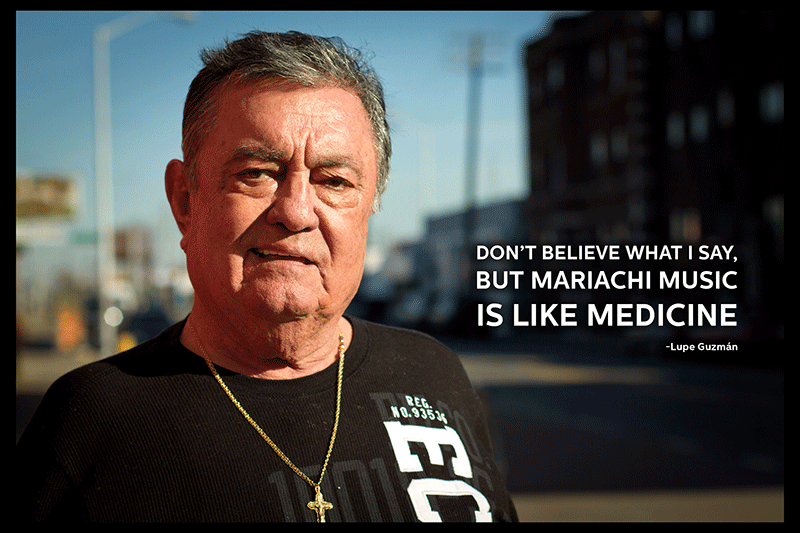
Beatrice Gonzales was a singer when she was younger. She bought the dress in this photo in Mexico 35 years ago. She says that she is still in love with the tradition of Mariachis.
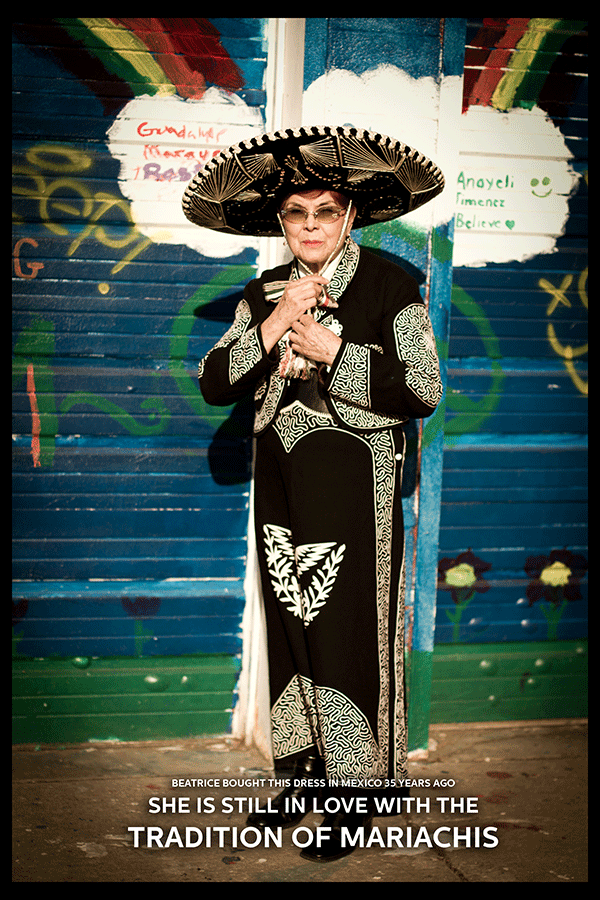
Arnulfo Guiterrez’ favorite song is “El Mariachi Loco.” It’s a LA SED Senior Center favorite for dancing.
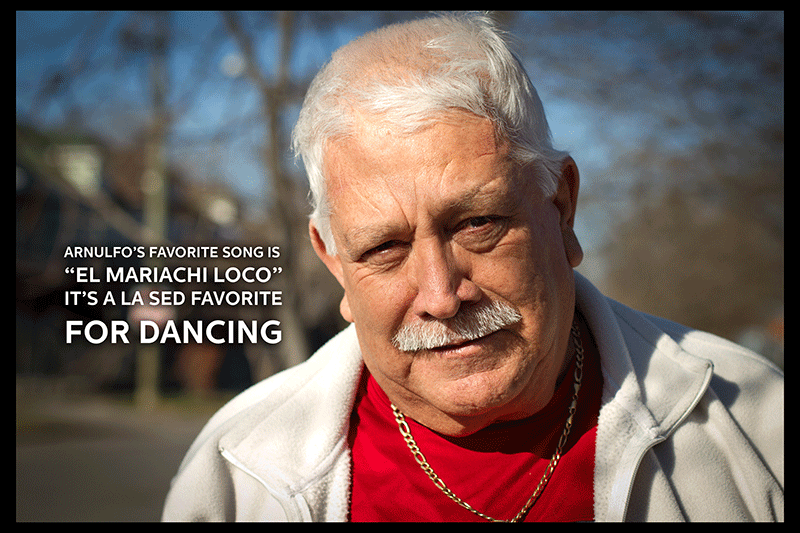
UMS thanks AARP for coordinating ticketing and transportation for a group of LA SED seniors to attend the Mariachi Vargas de Tecalitlán performance.
Behind the Scenes with Karriem Riggins

Photo by Gerard Victor.
Born in Detroit, Michigan, Karriem Riggins (drums) first began his musical journey when he joined his father Emmanuel, a Motown Records session musician who performed with Grant Green, in the studio to play with instruments. He is best known as a jazz drummer and hip-hop producer for artists including Common, Slum Village, Talib Kweli, and The Roots.
He is performing as part of the D-3 Trio during the upcoming From Cass Corridor to the World: A Tribute to Detroit’s Musical Golden Age performance on January 21.
Of his participation in the project, he says, “I spent a lot of time in the Cass Corridor area when I was young, being a part of the Detroit Council of the Arts. I was also in the Cass Tech Marching Band in 11th Grade, and we marched all through the corridor. I’m interested in this project because not only do I get to make music with my favorites, but we get a chance to create awareness. It’s an important artistic area of Detroit city.”
We asked Karriem what he’s been listening to lately. Check out his playlist below.
Learn more about Karriem Riggins at www.karriemriggins.com
Ahmad Jamal: Sampled Into The Hearts Of Hip-hop
Editor’s Note: At 81-years young, pianist Ahmad Jamal is a living jazz legend. And nothing marks the true sign of a legend than transcendence into other genres. Kelly “K-Fresh” Frazier of The Loop Detroit, a blog dedicated to the music of Detroit, writes about Ahmad Jamal’s influence on Hip-hop, bridging generations and keeping traditions alive through the sampling of his music. UMS presents Ahmad Jamal in Hill Auditorium this Saturday, September 17 at 8 pm.
Music has a way of transcending time in ways that are unfathomable. During its ascendance just decades ago, the hip-hop culture would appropriate music ranging from soul to jazz, and everything in between, and revive music, much of it nearly forgotten, from the generations preceding it. Through hip-hop, new groups of music listeners are now able to connect with the same artists that their fathers and grandfathers listened to. While there are countless musicians of yester-years that have found revival in this hip-hop age, the legendary jazz pianist Ahmad Jamal has contributed some of the greatest hip-hop records of all time.
In its infancy, the words spoken in hip-hop were real time accounts of urban struggle and poverty in the inner cities of America. Spawning from impoverished neighborhoods, this culture didn’t have the luxury of real bands with real musicians and real instruments. As a result, hip-hop artists had to borrow, or “sample,” from already-existing pieces of music to make the beats for their songs. These sampled bits, called “breaks,” could be the drums, the piano, the guitar, or anything else, and often looped over and overlaid onto each other to formulate a “band.”
Through sampling, such albums as 1970’s The Awakening, 1973’s Ahmad Jamal ’73, 1974’s Jamal Plays Jamal, and 1974’s Jamalca became forever a part of the hip-hop lexicon, influencing new generations of music producers and musicians. With just a sampling of a mere few seconds from some of Jamal’s work, this classic pianist has reached into the headphones of younger ears.
The best producers have an astute listening ability: to find that perfect loop and translate it into their beats. With these trained ears, many of these producers can find something to sample when the average listener could not. Let’s break down some of the best appropriations of Ahmad Jamal’s music in hip-hop.
At about the 7:29 mark of the nearly 10 minute long “Swahililand” from the Jamal Plays Jamal album, one of the greatest and most recognizable breaks in hip-hop history would occur when a young producer from Detroit named Jay Dee (aka J. Dilla) would sample it for 1996’s “Stakes Is High” from De La Soul. Wildly touted as one of the best songs from De La Soul, it also made Jay Dee one of the most sought after producers in urban music, and he would go on to produce for the likes of Busta Rhymes, Erykah Badu, and Common, among others.
Half way through the song “Dolphin Dance” from 1970’s The Awakening, Chicago producer No I.D. took just a few seconds of Jamal’s piano playing and transformed it into a hip-hop classic with 1994’s “Resurrection” from fellow Chicagoan Common. It’s one of those instances when that ear of No I.D. picked out something so perfect out minutes of piano from Jamal.
While classic hip-hop producers such as Kanye West, Da Beatminerz, Easy Mo Bee, and Buckwild, among others, have sampled Ahmad Jamal’s music, the contributions of giants DJ Premier and Pete Rock have held the most weight. Both producers revolutionized the art of hip-hop sampling in the 1990’s within their own groups (Gang Starr and Pete Rock & C.L. Smooth, respectively), along with producing for a who’s who in urban music. Much of their use of Ahmad Jamal’s material would come with their own groups, but some of the best would be on outside productions.
With the 1994 Nas classic “The World Is Yours,” Pete Rock brought inner city pain and struggle to life as he samples Jamal’s “I Love Music” from 1970’s The Awakening. A few years later, DJ Premier would lift another part of “I Love Music” for the 1996 tune from Jeru The Damaja “Me Or The Papes.” Proof that in the music world, that there are endless ways to sample, it just depends on the ear and creativity of the producer.
DJ Premier would lace Jeru The Dajama again on 1996’s Wrath Of The Math with a Jamal sampled beat for the song “One Day.” This haunting beat would use the strings and the piano of Jamal’s “Don’t Misunderstand” from 1974’s Jamalca, and become one of the most notarized songs in the discography of both DJ Premier and Jeru The Damaja.
For all the artists that have sampled Ahmad Jamal in the past, he has been more than just sampling fodder, but an inspiration to their music as a whole.
Video: Behind the scenes with Mariachi Vargas at WDET Detroit
Here’s a special behind-the-scenes video of the Mariachi Vargas de Tecalitlan artist residency. Yesterday, Alberto Alfaro (violinist in Mariachi Vargas) accompanied two youth Mariachi singers, Sebastien de la Cruz and Karenn Lazo (both were winners in the 2009 Mariachi Vargas Extravaganza Competition) on the Craig Fahle radio show on WDET 101.9 FM Detroit. Sebastien and Karenn will sing this morning at Hil Auditorium in a special youth performance for K-12 students from Southeastern Michigan. I highly recommend scanning forward to about 1:30 in the video to hear Sebastien sing — he’s amazing! Also, don’t miss Karenn’s performance at the end of the video, which is equally stunning.
This Week in Numbers: Where in Southeastern Michigan is UMS?
This week at UMS is one of the busiest all season, so you might notice that posting on the UMS Lobby is a little lighter than usual! With the presentation of three different ensembles three days in a row (The Tallis Scholars, Mariachi Vargas de Tecalitlán, and Assi El Helani) combined with our collaboration on the presentation of the ONCE. MORE. event, UMS staff will be all over southeastern Michigan between Ann Arbor and Detroit, with many stops at the airport! Here’s what we’re up to, by the numbers:
- 6 concerts (including one youth performance)
- 11 airport runs
- 4 school visits
- 1 hospital visit
- 5 community receptions
- 3 artist/student workshops
- 1 Arts & Eats
- 4 exhibits/installations
- 3 public lectures
We hope you’ll find a way to participate in this week’s offerings–check out the public events here.




